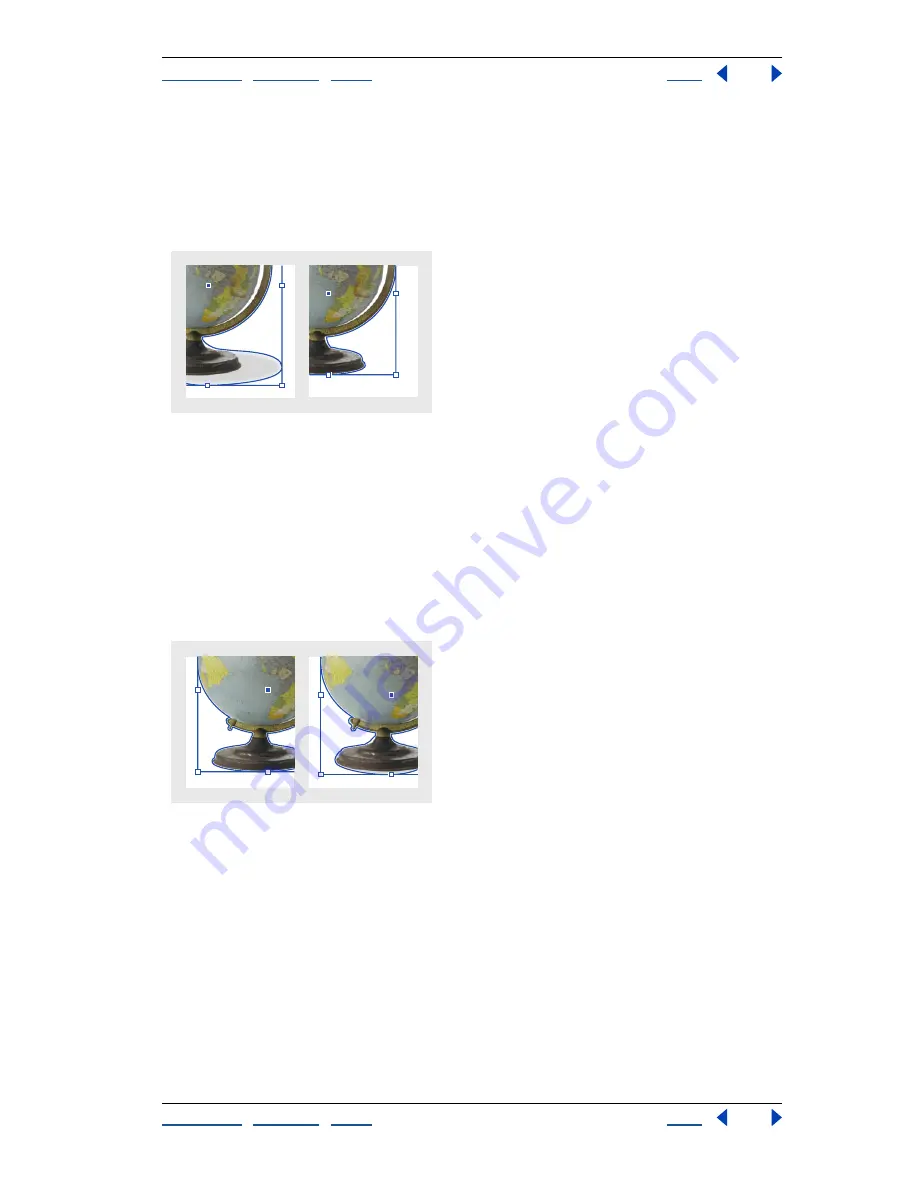
Using Help
|
Contents
|
Index
Back
264
Adobe InDesign Help
Arranging and Combining Objects
Using Help
|
Contents
|
Index
Back
264
Threshold
Type a value or drag the slider to specify the darkest pixel value that will
define the resulting clipping path. Increasing this value makes more pixels transparent by
extending the range of lightness values added to the hidden area, starting from 0 (white).
For example, if you want to remove a very light drop shadow when using Detect Edges,
try increasing the Threshold until the shadow disappears. If light pixels that should be
visible are invisible, the Threshold is too high.
Threshold levels at 25 (left) and 55 (right)
Tolerance
Type a value or drag the slider to specify how similar a pixel’s lightness value
can be to the Threshold value before the pixel is hidden by the clipping path. Increasing
the Tolerance value is useful for removing unwanted bumps caused by stray pixels that are
darker than, but close to the lightness value of, the Threshold value. Higher Tolerance
values usually create a smoother, looser clipping path, by increasing the range of values
near the Tolerance value within which stray darker pixels are included. Decreasing the
Tolerance value is like tightening the clipping path around smaller variations in value.
Lower Tolerance values create a rougher clipping path by adding anchor points, which
may make it harder to print the image.
Tolerance levels at 0 (left) and 5 (right)






























